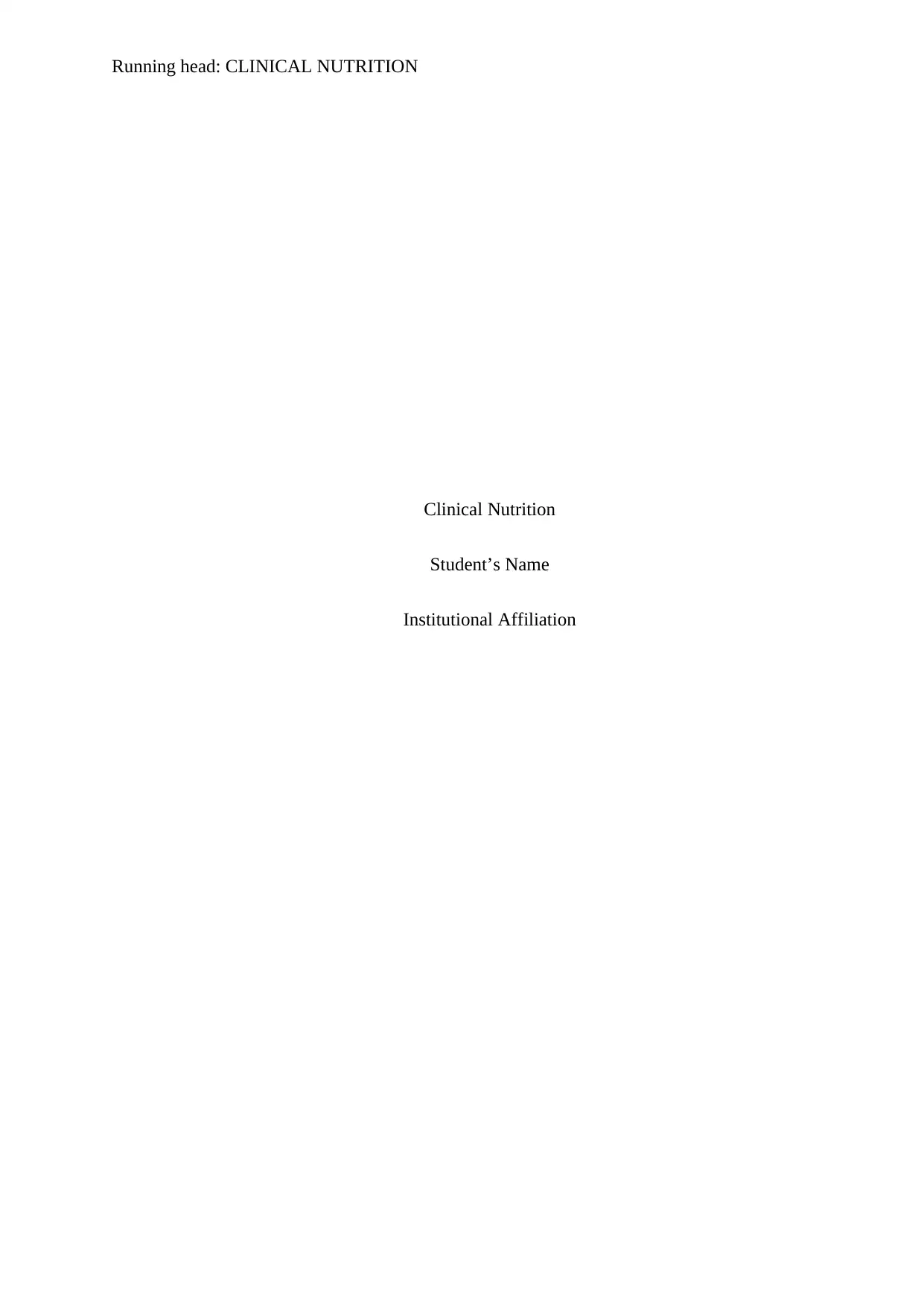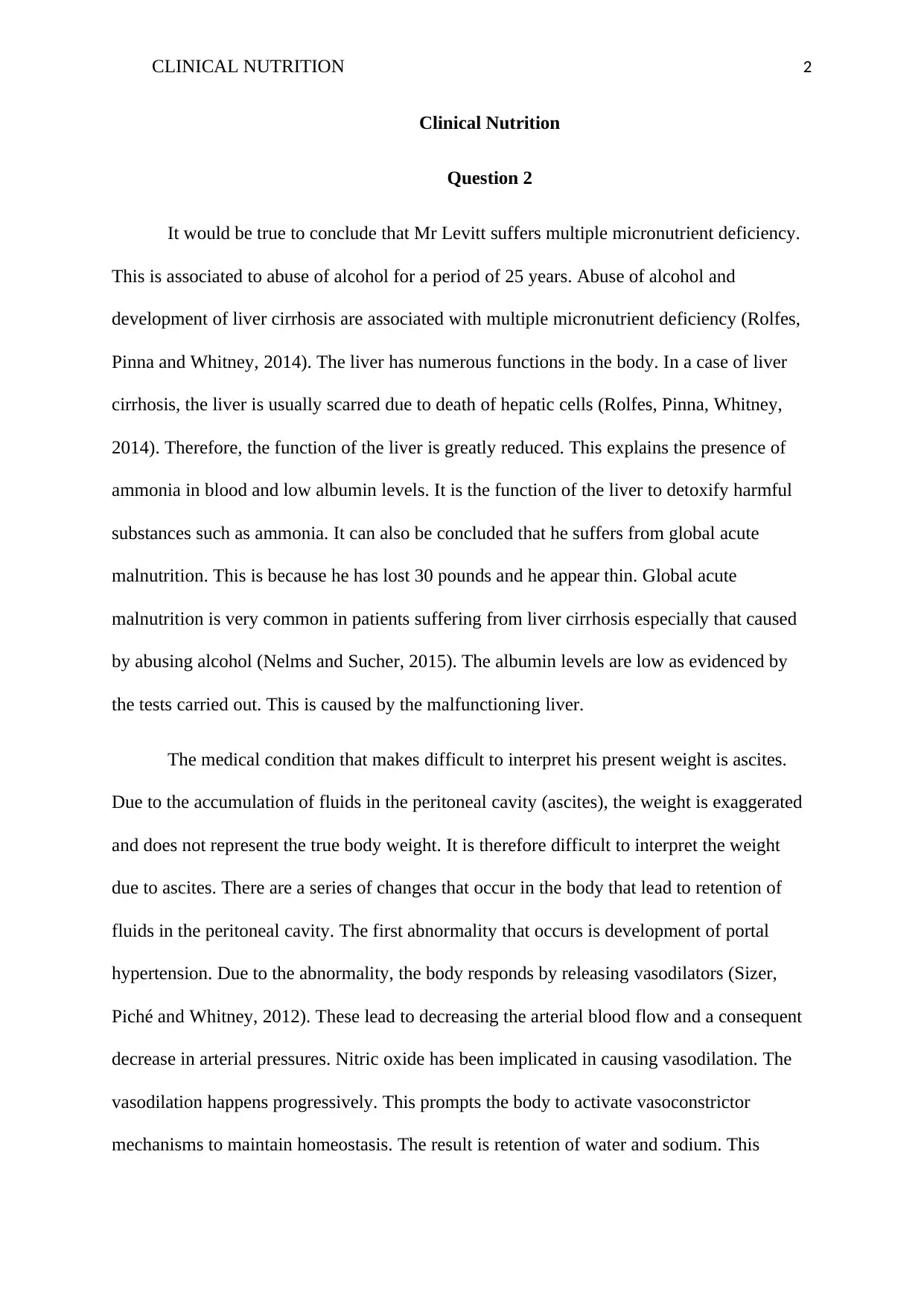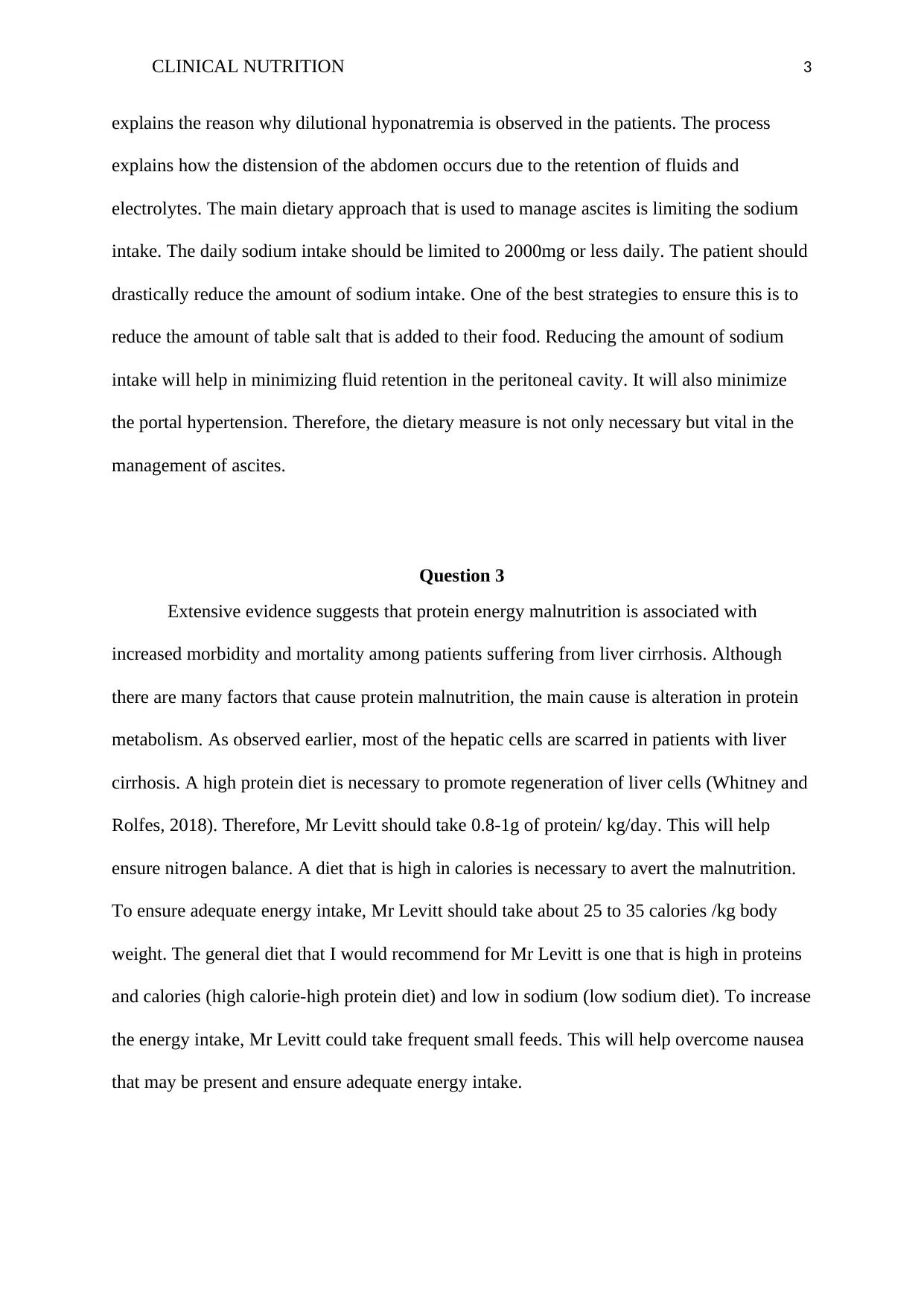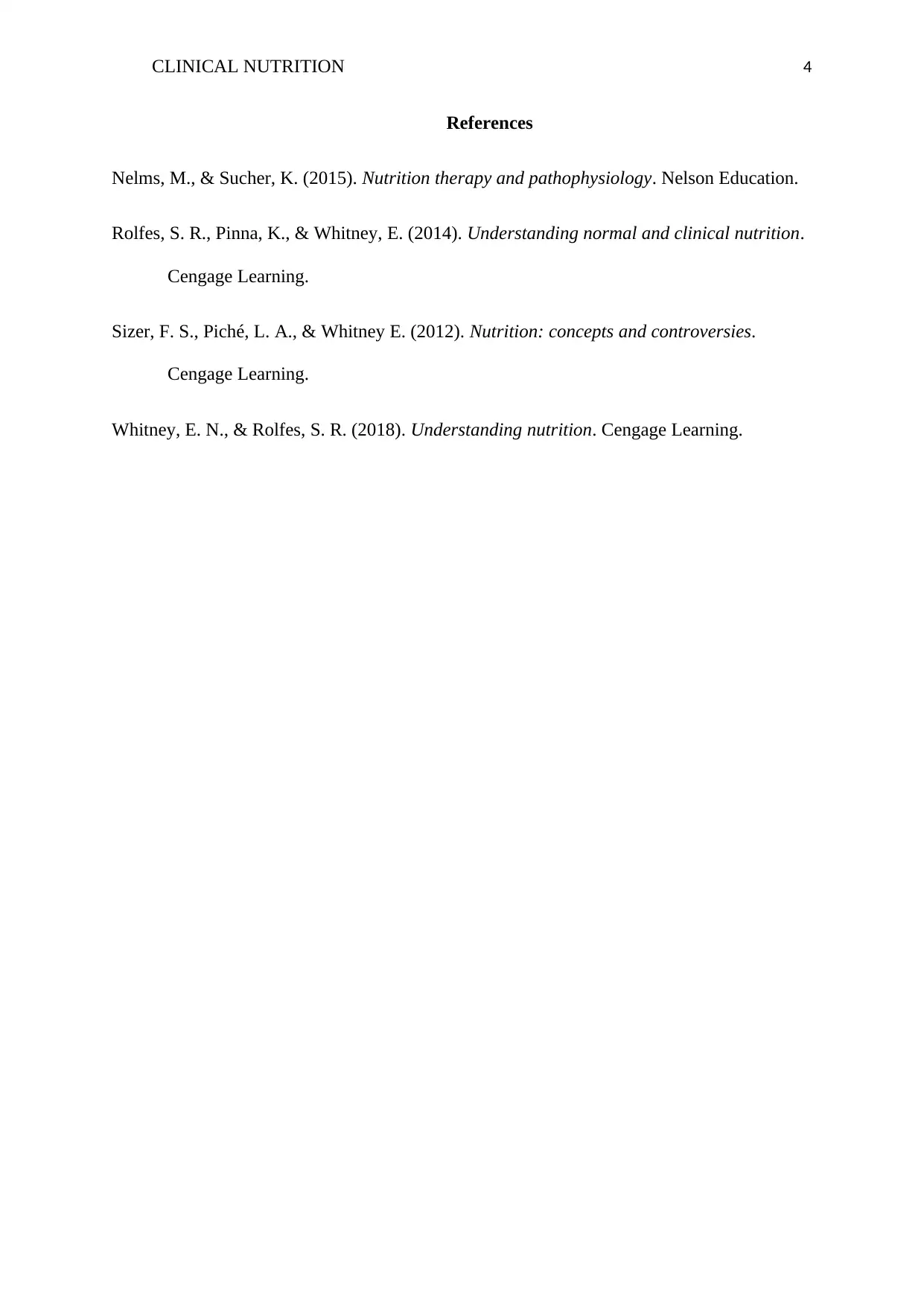Clinical Nutrition: Liver Cirrhosis, Malnutrition & Dietary Plan
VerifiedAdded on 2023/05/31
|4
|809
|264
Case Study
AI Summary
This case study addresses the clinical nutrition of a patient, Mr. Levitt, who presents with multiple micronutrient deficiencies and global acute malnutrition, likely stemming from a 25-year history of alcohol abuse and subsequent liver cirrhosis. The analysis identifies ascites as a complicating factor in interpreting the patient's weight due to fluid accumulation in the peritoneal cavity, which is linked to portal hypertension and the body's compensatory mechanisms leading to sodium and water retention. The recommended dietary approach emphasizes limiting sodium intake to manage ascites. Furthermore, the study highlights the importance of addressing protein-energy malnutrition, common in liver cirrhosis patients, by recommending a high-protein (0.8-1g/kg/day) and high-calorie (25-35 calories/kg body weight) diet, delivered through frequent small meals to improve energy intake and mitigate nausea. The overall dietary strategy involves a high-calorie, high-protein, and low-sodium diet to support liver regeneration, achieve nitrogen balance, and manage fluid retention.
1 out of 4





![[object Object]](/_next/static/media/star-bottom.7253800d.svg)